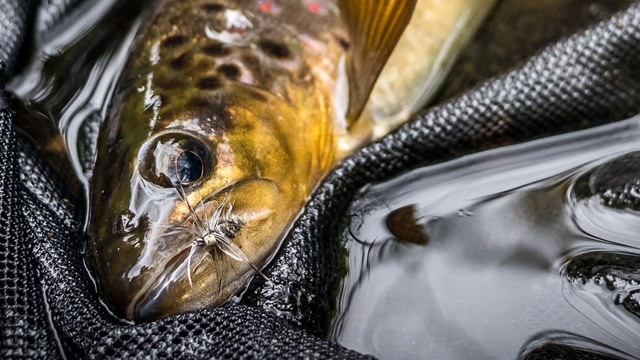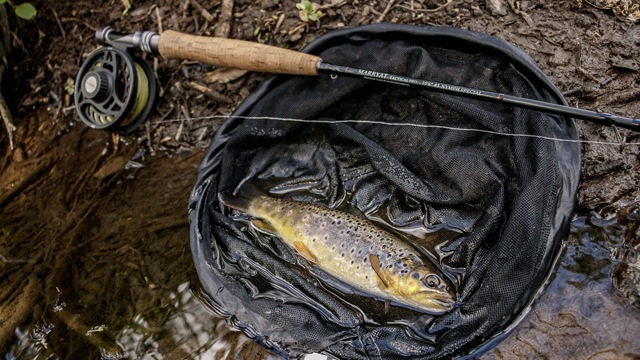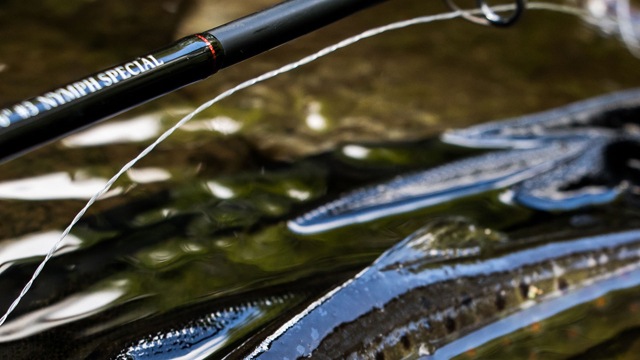Here’s the first in a mini-series about re-discovering the magic of English Wet Flies tied with stiff hackles for freestone rivers in the 1860s:
Watch Episode 2 Here: https://www.discovertenkara.com/devon-wet-fly-2/
Watch Episode 3 Here: https://www.discovertenkara.com/cutcliffe-art-of-trout-fishing/
Adam Rieger & Cutcliffe-Style Wet Flies
With big thanks to Adam’s generosity in sending some of his flies, inspired after reading Cutcliffe’s book. My successes on stream with those gifted flies certainly stoked the fire to continue researching and experimenting with this tying AND fishing style.

Modern “Competition” River Fly Rods & Traditional Wets
Although the rods described in Cutcliffe’s book were considerably heavier – the requirements for length and suppleness to deliver and manage the casting line chime with modern competition rod design. Designed by multiple-time world champion Pascal Cognard, the Marryat Tactical Pro (nymph special) turned out to be fantastic for the high-rod tip and short drift fishing style of Cutcliffe (and I’ve had a ton of fun with the setup of my home-furled nylon casting lines with this rod over the last trout season).

Experiments with my own “Wet Fly Line” for this style
Although far from complete, I’ve also enjoyed my experiments with my nylon-furled wet fly lines this season. As well as the Cutcliffe flies, I’ve also found it effective for soft-hackle styles as well (unsurprisingly). Its a nice way of creating different tapers without necessarily needing to buy a lot of different diameters of nylon. It is also quite easy to create a little more casting mass than a regular French leader (which creates different trade-offs of course; but also brings it quite close to the character of the lines and rigs that Cutcliffe would have used).

Look out for More Historic vs. Modern Wet Fly Episodes, Coming Soon…
There are more episodes on our comparisons of modern fly fishing flies and methods to the wet flies tied and fished in the 1860s by Henry Charles Cutcliffe coming soon. Make sure to subscribe to our email tutorials to get notified of each new publication.
Paul

Feel free to let us know what you think here in the comments 🙂
Paul
Lovely to see older traditional styles and fly patterns and styles being re-visited. It was good back then and it certainly is good now. It is refreshing to see flies without a bead on! It motivates me to fish these patterns more than I currently do.
Good job chaps.
Thanks Glyn – and don’t forget to share pictures of your captures with us.
Paul
Ok will do. Grayling responding to spiders right now on the Welsh Dee but with a slightly weighted point fly to achieve a little depth before the swing begins. Caught yesterday on a rising river on Snipe and Purple and Partidge and Orange. I have been using a ‘Jingler’ style with a cock hackle behind the game hackle to support it and give it some stiffness. Probably heresy in some eyes!
Tight lines both.
I think that’s a great example of “form follows function” Glyn 🙂
Paul
Do you have any instructions for building the furled fly line.
Tight lines
Jack
Hi Jack, I’m still working on those experiments myself – but the short answer is that I use the hand-furling method shown to me by Hirata-san (for horsehair). The only difference is that, instead of knotting the different lengths together, I whip them with tying silk and then add a thin coat of varnish. That way the line passes easily through the guides on the rod.
Hirata-san’s method is shown in both e-book and video lessons inside the Hirata-san Bundle If you look for our “Survival Fishing” blog post I believe there may be a live link to the Kartra version of that product. It is also available on Gumroad.
Very best wishes,
Paul
Jack – just as a heads up here’s a link to the standalone e-book that walks you through Hirata-san’s line-making method (with text, photos and diagrams).
I’ve added a discount code for the first 10 people who read this comments section and take advantage.
The code is “cutcliffe” and will take £5 off the retail cost when entered into the discount code box at the checkout on this page: https://gumroad.com/products/bJHkb
Paul
Left a review on Amazon re: Cutcliffe book. Still confused about what hackle substitute to use for the illustrated flies given the fact that modern genetic hackle is much different (more barb density/uniform/shorter) than used back then. What supplier/type of cape did you use for the photographs in the book?